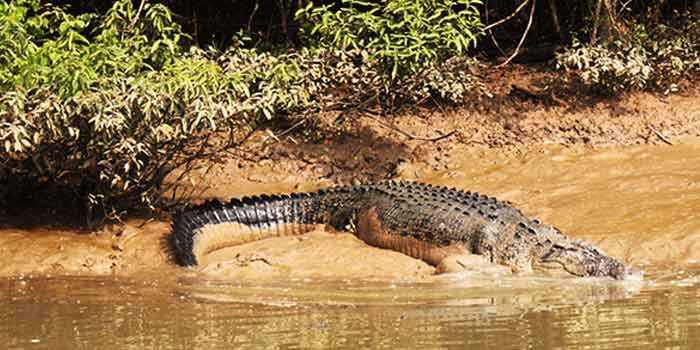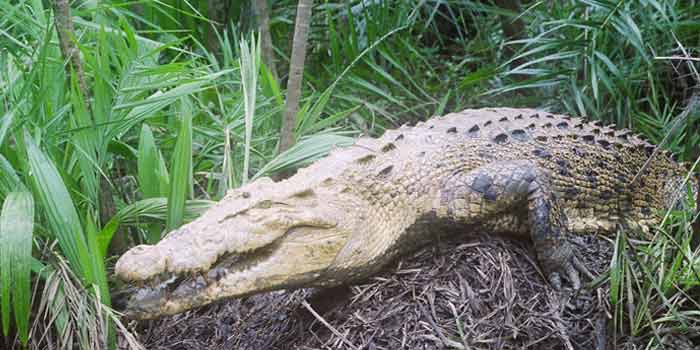Bhitarkanika National Park has reopened to tourists once again since the breeding season of its famous saltwater crocodiles has come to an end. Situated in the Kendrapara district in Odisha, the protected wetland sites in the area were declared out of bounds to visitors for three months between May 1 and July 31 this year.
The main aim of the prohibition was to allow the crocodiles to multiply in peace of course. Additionally, these reptiles tend to become violent and attack whoever they perceive as an intruder during the breeding season. So concern for the safety of tourists in Bhitarkanika National Park was also another reason for closing the gates temporarily.

Divisional Forest Officer of Rajnagar Mangrove (wildlife) Forest Division, Bimal Prasanna Acharya, told PTI that bookings for cottages for visitors have begun once again. The park receives about 50000 local and international sightseers each year. 145 square kilometers of the protected land is taken up by wetland spots and mangroves.
About 1644 crocodiles were seen in the park so far this year. Picnicking, camping and trekking rank among the most popular activities here. On a daily basis, almost 350 to 400 people flock to enjoy boat tours of the place. So you can see why the area had to be shut down since May to leave the breeding estuarine crocodiles undisturbed.

All visitors to Bhitarkanika National Park are required to provide ID proof in order to gain entry into the national park. Apart from wanting to observe the saltwater crocodiles, tourists are generally also keen on watching the resident and migrant bird species there. Additionally, the mangrove cover offers sanctuary to numerous small animals.
Bhitarkanika National Park very important from the geomorphologic, ecological and biological point of view. It consists of crisscrossing creeks, rivers, backwaters, estuaries, mud flats and accumulated lands that play host to a wide range of animals and plants.
